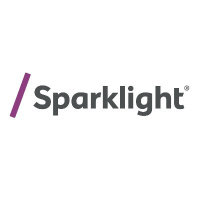
Avanti Feeds Ltd
NSE:AVANTIFEED


| US |

|
Johnson & Johnson
NYSE:JNJ
|
Pharmaceuticals
|
| US |

|
Berkshire Hathaway Inc
NYSE:BRK.A
|
Financial Services
|
| US |

|
Bank of America Corp
NYSE:BAC
|
Banking
|
| US |

|
Mastercard Inc
NYSE:MA
|
Technology
|
| US |

|
UnitedHealth Group Inc
NYSE:UNH
|
Health Care
|
| US |

|
Exxon Mobil Corp
NYSE:XOM
|
Energy
|
| US |

|
Pfizer Inc
NYSE:PFE
|
Pharmaceuticals
|
| US |

|
Palantir Technologies Inc
NYSE:PLTR
|
Technology
|
| US |

|
Nike Inc
NYSE:NKE
|
Textiles, Apparel & Luxury Goods
|
| US |

|
Visa Inc
NYSE:V
|
Technology
|
| CN |

|
Alibaba Group Holding Ltd
NYSE:BABA
|
Retail
|
| US |

|
JPMorgan Chase & Co
NYSE:JPM
|
Banking
|
| US |

|
Coca-Cola Co
NYSE:KO
|
Beverages
|
| US |

|
Walmart Inc
NYSE:WMT
|
Retail
|
| US |

|
Verizon Communications Inc
NYSE:VZ
|
Telecommunication
|
| US |

|
Chevron Corp
NYSE:CVX
|
Energy
|
Utilize notes to systematically review your investment decisions. By reflecting on past outcomes, you can discern effective strategies and identify those that underperformed. This continuous feedback loop enables you to adapt and refine your approach, optimizing for future success.
Each note serves as a learning point, offering insights into your decision-making processes. Over time, you'll accumulate a personalized database of knowledge, enhancing your ability to make informed decisions quickly and effectively.
With a comprehensive record of your investment history at your fingertips, you can compare current opportunities against past experiences. This not only bolsters your confidence but also ensures that each decision is grounded in a well-documented rationale.
Do you really want to delete this note?
This action cannot be undone.

| 52 Week Range |
596
933.05
|
| Price Target |
|
We'll email you a reminder when the closing price reaches INR.
Choose the stock you wish to monitor with a price alert.

|
Johnson & Johnson
NYSE:JNJ
|
US |

|
Berkshire Hathaway Inc
NYSE:BRK.A
|
US |

|
Bank of America Corp
NYSE:BAC
|
US |

|
Mastercard Inc
NYSE:MA
|
US |

|
UnitedHealth Group Inc
NYSE:UNH
|
US |

|
Exxon Mobil Corp
NYSE:XOM
|
US |

|
Pfizer Inc
NYSE:PFE
|
US |

|
Palantir Technologies Inc
NYSE:PLTR
|
US |

|
Nike Inc
NYSE:NKE
|
US |

|
Visa Inc
NYSE:V
|
US |

|
Alibaba Group Holding Ltd
NYSE:BABA
|
CN |

|
JPMorgan Chase & Co
NYSE:JPM
|
US |

|
Coca-Cola Co
NYSE:KO
|
US |

|
Walmart Inc
NYSE:WMT
|
US |

|
Verizon Communications Inc
NYSE:VZ
|
US |

|
Chevron Corp
NYSE:CVX
|
US |
This alert will be permanently deleted.
Avanti Feeds Ltd
Avanti Feeds Ltd. is a manufacturer of shrimp feed, which engages in production and exports shrimp. The company is headquartered in Hyderabad, Telangana and currently employs 1,162 full-time employees. Its segments include Shrimp Feed, Processed Shrimp, Power, and Shrimp Hatchery. The shrimp feed is manufactured and marketed to the farmers, which is used in aqua culture to grow shrimp. The shrimps are purchased from the farmers and are further processed and exported to various countries. The company has installed over four mills of over 3.2 megawatts capacity at Chitradurga, Karnataka. The Power generated from windmills is sold to Bangalore Electricity Supply Company Limited (BESCOM) under power purchase agreement. The company has five shrimp feed manufacturing, two shrimp processing, a hatchery to produce shrimp larvae and a shrimp culture farm. Its products include raw shrimp, cooked shrimp, and value-added shrimp. Its value-added shrimps include marinated products, breaded products, skewers, and shrimp rings. The company provides its products to various market, such as Europe, Japan, Korea, China, Russia, Canada, and the Middle East.

Avanti Feeds Ltd. is a manufacturer of shrimp feed, which engages in production and exports shrimp. The company is headquartered in Hyderabad, Telangana and currently employs 1,162 full-time employees. Its segments include Shrimp Feed, Processed Shrimp, Power, and Shrimp Hatchery. The shrimp feed is manufactured and marketed to the farmers, which is used in aqua culture to grow shrimp. The shrimps are purchased from the farmers and are further processed and exported to various countries. The company has installed over four mills of over 3.2 megawatts capacity at Chitradurga, Karnataka. The Power generated from windmills is sold to Bangalore Electricity Supply Company Limited (BESCOM) under power purchase agreement. The company has five shrimp feed manufacturing, two shrimp processing, a hatchery to produce shrimp larvae and a shrimp culture farm. Its products include raw shrimp, cooked shrimp, and value-added shrimp. Its value-added shrimps include marinated products, breaded products, skewers, and shrimp rings. The company provides its products to various market, such as Europe, Japan, Korea, China, Russia, Canada, and the Middle East.
Revenue Growth: Avanti Feeds reported consolidated gross income of INR 1,659 crores for Q2 FY '26, up 18.75% year-over-year, and essentially flat sequentially.
Profitability: Profit before tax (PBT) for Q2 FY '26 was INR 227 crores, increasing 40.12% year-over-year but down 8.83% quarter-over-quarter.
Feed Division: Shrimp feed sales volumes rose year-over-year, but fell sequentially due to seasonality and rising raw material costs, which may pressure margins in coming quarters.
Shrimp Processing: The processing and export division saw a 62% year-over-year growth in gross income and significant volume gains, driven by higher sales and favorable forex.
Pet Care Expansion: The pet food business experienced strong sales growth, with expanding product lines and channels, and a manufacturing facility in development.
Tariff Impact: Management maintained their FY '26 shrimp export volume guidance of 17,000 MT despite U.S. tariffs, but flagged that future revisions may be needed if tariffs persist.
Government Support: The government announced a 5-year, INR 25,000 crore export promotion mission, which could benefit the sector, though implementation details are pending.

































